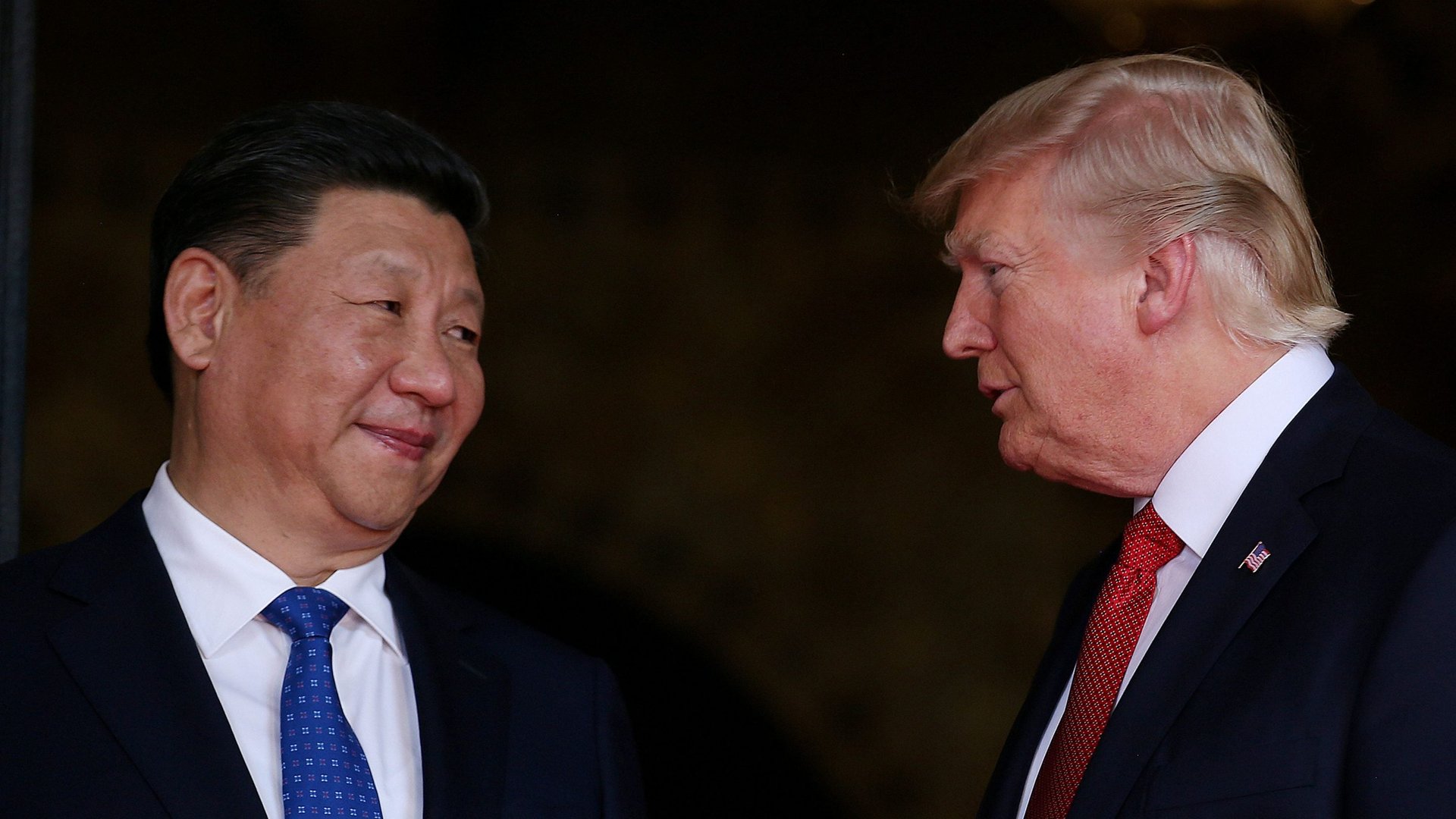Trump says rising rates are bad for US. They’re an even bigger problem for China
Last week, Donald Trump broke with presidential norms and chided the Federal Reserve for raising rates. The US president argued that rising rates were inflating the value of the dollar and, hence, hurting US competitiveness.


Last week, Donald Trump broke with presidential norms and chided the Federal Reserve for raising rates. The US president argued that rising rates were inflating the value of the dollar and, hence, hurting US competitiveness.
“In China, their currency is dropping like a rock and our currency is going up and I have to tell you, it puts us at a disadvantage,” Trump told CNBC in an interview that aired July 20.
The guy’s not wrong. The yuan has fallen more than 4% against the dollar in the last month, driven by monetary easing in China and the escalating US-China trade war.
But Trump isn’t the only one who’s sweating the impact of Fed tightening on the Chinese yuan. It’s also undoubtedly weighing heavily on China’s leaders. That sharp depreciation is kicking up fears that China’s authorities lack the control to stave off outflows of money that would dangerously destabilize its economy.
A 4% drop might not sound like a lot. But if the yuan keeps weakening at the same pace it has since early June, by the end of the year it will have shed nearly a quarter of its present value against the dollar.
So what does this have to do with the Fed? Until recently, China’s interest rates were higher than those in the US. However, as US rates keep climbing, investors can earn more by taking their money out of China and sinking it into American bonds instead, benefiting from rising yields and a strengthening dollar.
This is a classic problem of what’s sometimes called the “trilemma” or the “impossible trinity”—the hypothesis that a country at any given time can only achieve two, but not three, of the following: the free flow of capital, a stable foreign exchange rate, and independent monetary policy.
In the past, China has seemed to defy this axiom for the simple reason that it only aimed to achieve the latter two on the list—rather than allow the free flow of capital, it tightly controlled how much domestic currency could leave China.
That was possible in no small part because China ran big trade surpluses, while its rapid growth drew in steady gushes of net foreign investment. Among other things, those inflows meant it ran a mammoth current account surplus (that is, the excess of a country’s savings over investment). It also let its central bank, the People’s Bank of China, amass nearly $4 trillion in foreign exchange reserves, a process through which it controlled both the yuan’s value and domestic liquidity conditions.
But Chinese authorities now exert much less control over the yuan’s value than they have in the past. One of the main reasons for that shift is that China’s once-enormous current account surplus—the excess of its savings over investment—has shrunk.
The receding tide of trade earnings has left the Chinese economy much more vulnerable to wild swings in financial capital flows, as Claudio Piron and Ronald Man, currency strategists at BofA/Merrill Lynch, point out in a note yesterday. As it happens, an inbound surge in foreign capital investing in Chinese bonds actually drove up the yuan’s value in the first quarter of 2018. To Piron and Man’s point, those flows could just as easily reverse.
What might spur that reversal? A growing number of ominous factors. China’s growth is sputtering as the government slows credit growth, part of a campaign heralded by president Xi Jinping to rein in the country’s scary debt levels. On top of that, there’s Trump’s trade war, which could hit Chinese exports and shrink its surplus even more.
To offset the growing scarcity of cash sloshing around the system, the Chinese central bank has been pumping money into the economy and letting the yuan weaken.
While some of the yuan’s loss of value is simply the flip-side of a strengthening dollar, the yuan has also been weakening against an indexed basket of currencies.
“The issue now is whether the benefits of CNY depreciation are reaching diminishing returns and may ultimately upend efforts to support domestic liquidity by triggering outflows,” write Piron and Man.
The problem here is, at a certain point, currency expectations tend to be to be self-fulfilling. When businesses and traders see conditions they think should be pushing down the yuan’s value, they sell their yuan for other currencies. That makes the yuan weaken, spurring others to offload theirs. If this cycle builds into an all-out exodus, it can trigger what economists call “capital flight,” with investors taking their money out of the country, which can cause precipitous drops in a currency’s value. This can be devastating for an economy because it makes it much harder for domestic businesses to pay foreign-currency debts. It can also tighten liquidity conditions, causing companies to default. And while its foreign debt levels are manageable, China’s hefty load of domestic debt makes mass defaults a huge worry.
Now there’s one silver bullet in the battle against capital outflows: A huge cache of foreign exchange reserves. Those can be sold to keep a currency from weakening too fast—or even at all. And China has a lot of those. At a little more than $3 trillion, its foreign exchange reserves are bigger than those of any other country.
Then again, they used to be quite a bit larger.
The last time China’s financial authorities faced tangled intensely with currency speculators—from mid-2014 through 2015—they spent nearly a quarter of those reserves before they wrested back control. And back then, the Fed wasn’t raising rates.